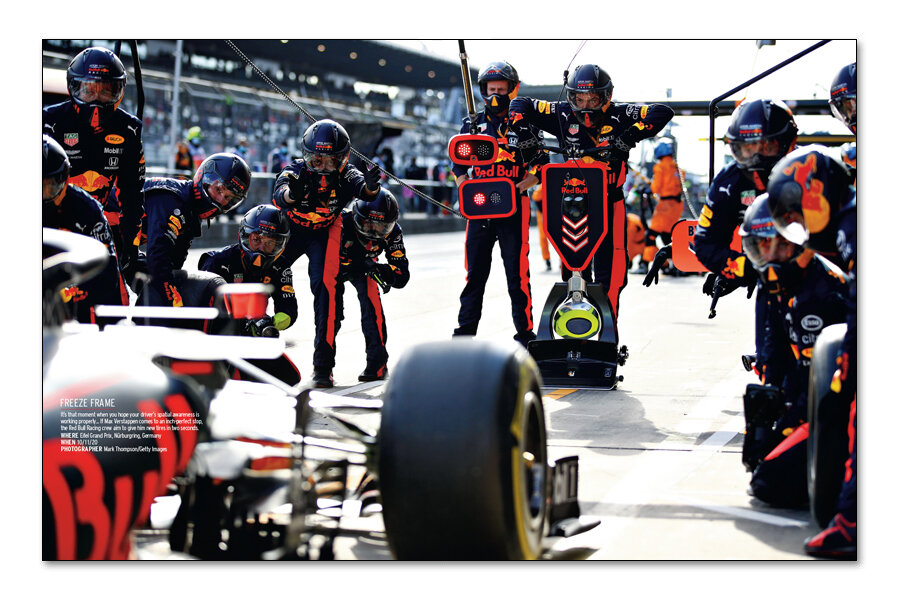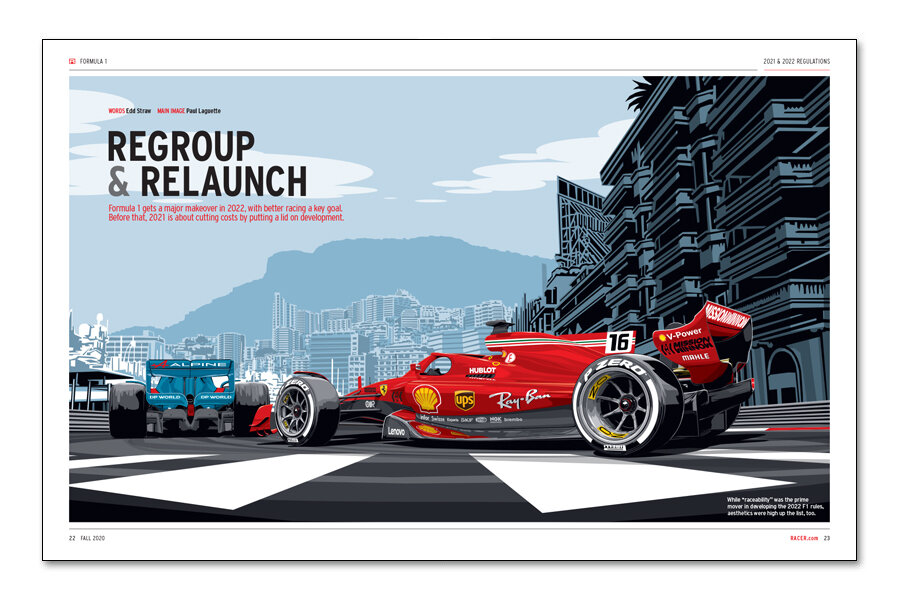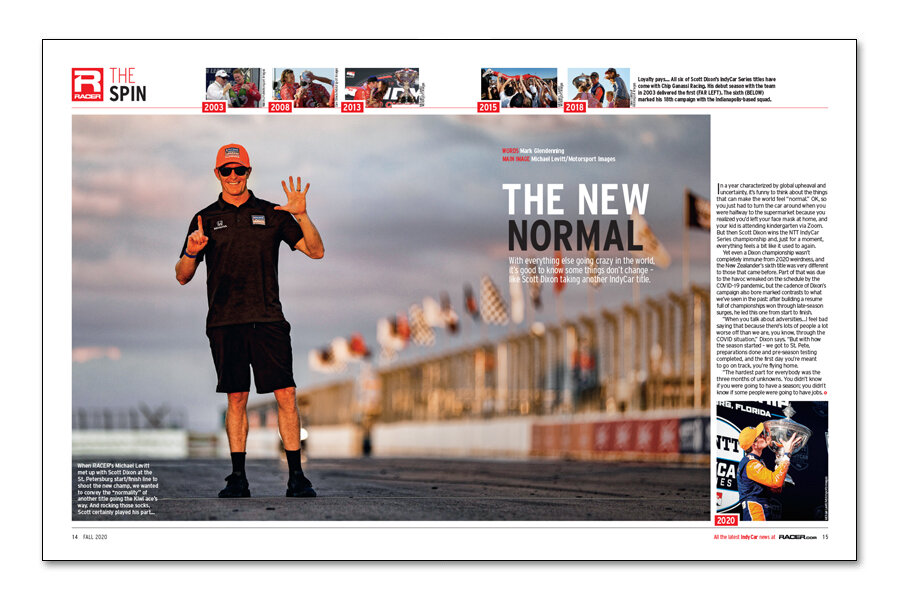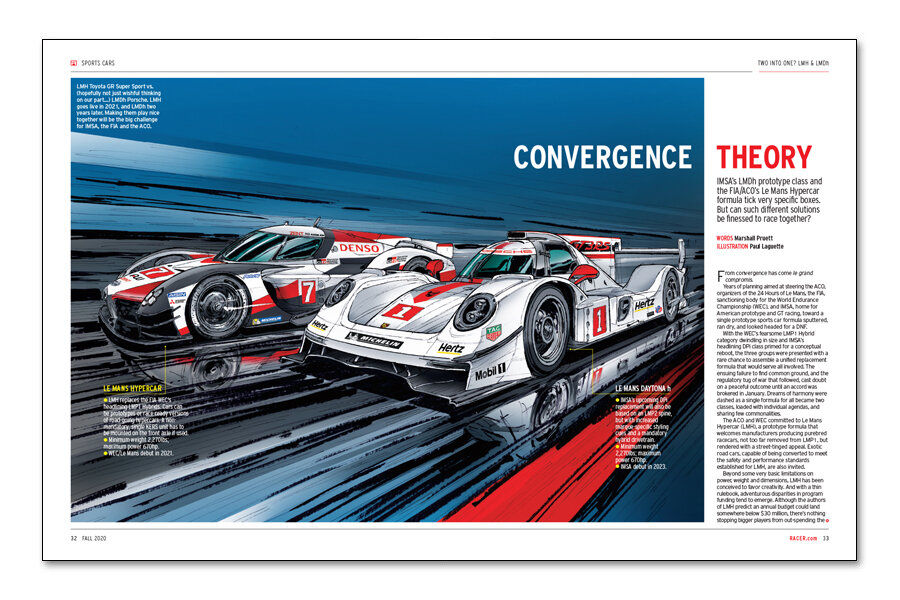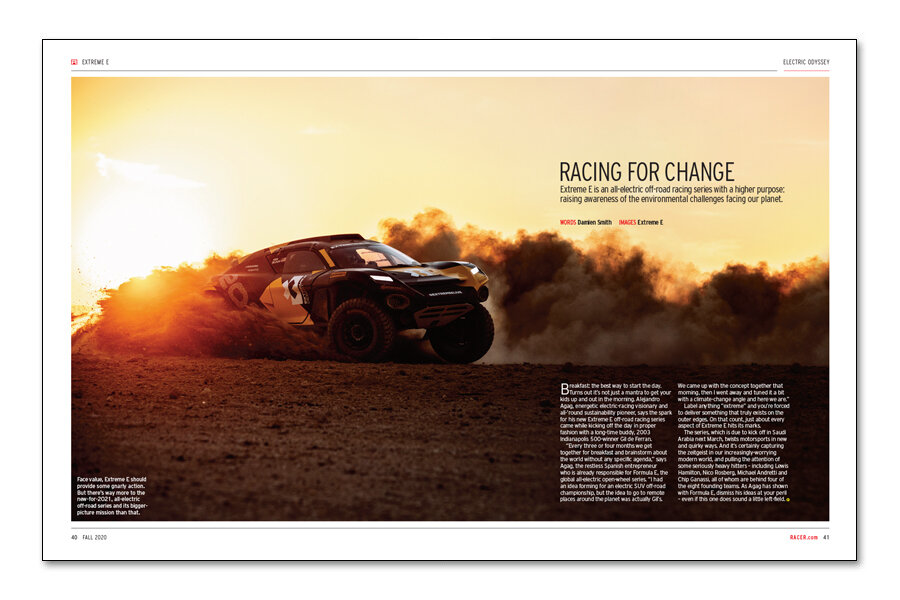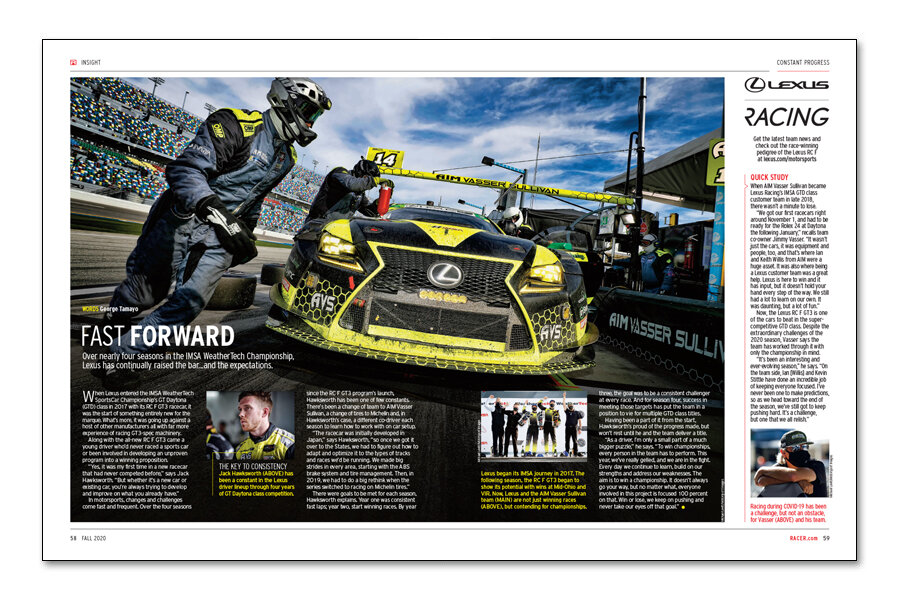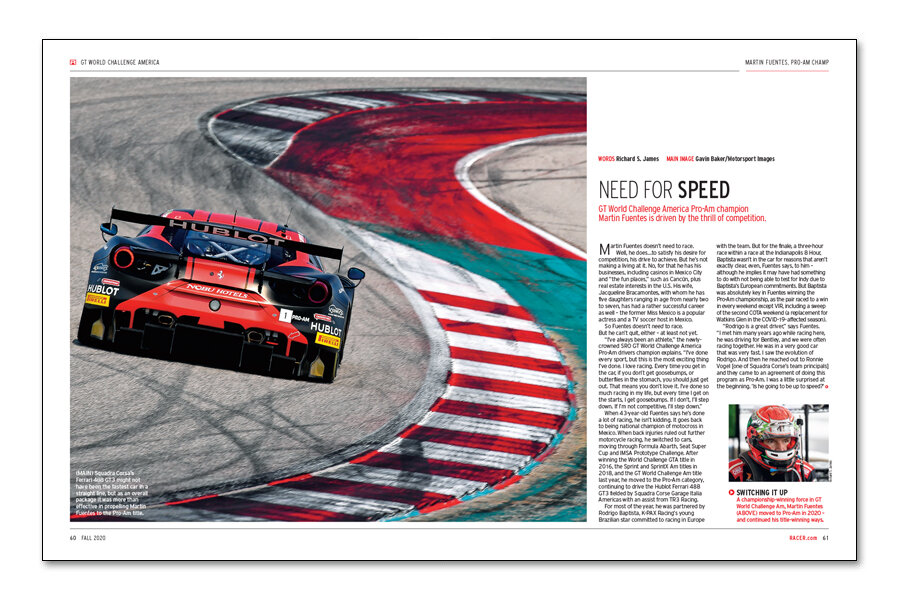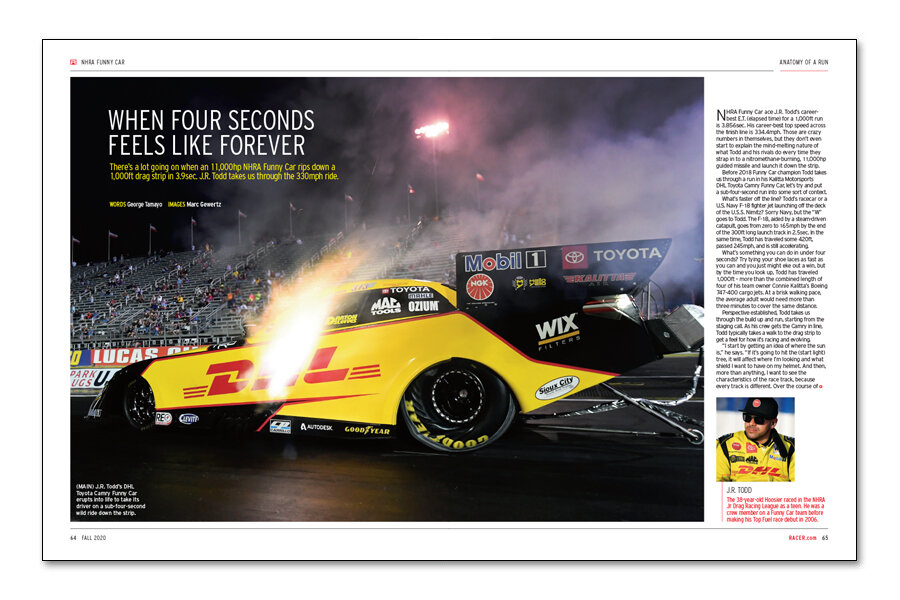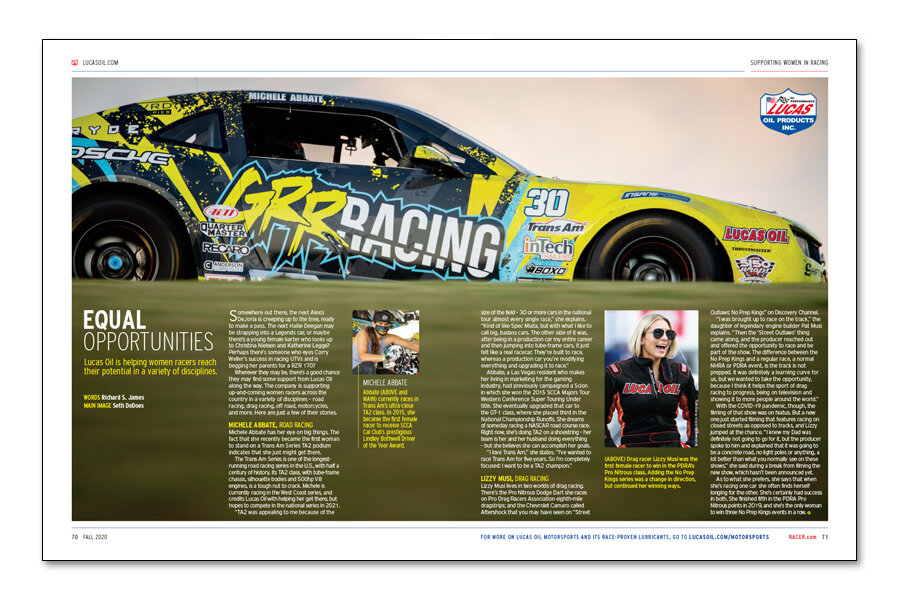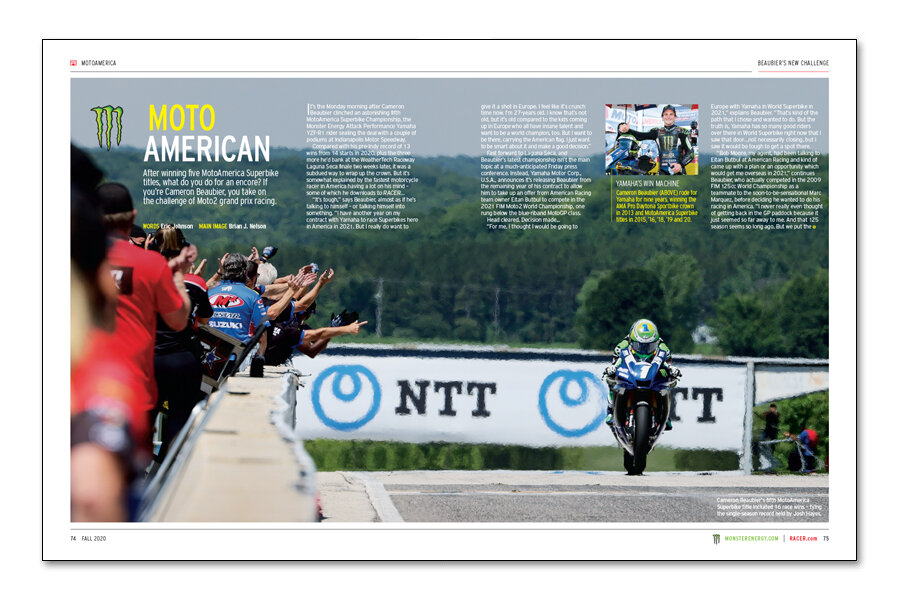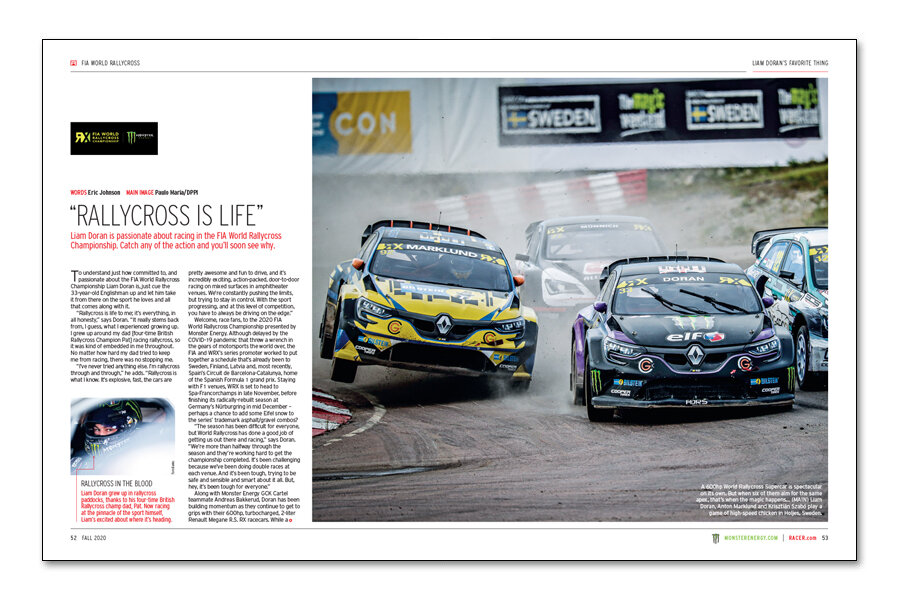Number 307: The 2020 Technology Issue
According to the Merriam-Webster Dictionary, technology is “a manner of accomplishing a task especially using technical processes, methods, or knowledge.” And for the latest issue of RACER magazine (No. 307 Fall 2020), our annual Technology Issue, it’s the tasks to be accomplished, not just the processes and methods, that are of particular interest to us.
For Formula 1, those tasks include improving the racing it delivers and leveling the playing field among its teams, as well as reducing budgets from crazy to merely eye-watering.
The technology part of that? Instigating a new set of regulations for 2022 that limit certain technologies, push others to a position of prominence, and allow just enough room for original thinking in just enough areas of car design that F1 doesn’t cut loose from the DNA that’s kept it at the pinnacle of racing for 70 years.
Longer term, F1 must also determine what it wants its next generation of power units to be. That not only involves taking the long view on where it thinks the larger automotive landscape will be in a decade, two decades, or more, but how relevant it wants to be within that landscape.
For the new-for-2021 Extreme E series, the task is to raise global awareness for action to combat climate change and promote a low-carbon future, while delivering must-see action from the world’s first all-electric off-road racing championship.
Those are lofty goals for any series, but Extreme E’s founder is Alejandro Agag, the guy behind the burgeoning FIA Formula E Championship. His track record says he’s someone to take seriously and, as he explains, motorsports has to be part of the solution if it wants to remain relevant – that word again – in the years ahead.
For the two most important sports car racing sanctioning bodies, FIA/ACO and IMSA, the task isn’t just to make two new sets of technical regulations for their respective headliner classes a success in isolation, but to coerce two approaches and philosophies (and timescales) to play nice with each other.
Both sets of regs are interesting and worthy answers, but to very different questions. On the FIA/ACO side, Le Mans Hypercar is the successor to the LMP1 Hybrids that ruled the WEC for a glorious decade of cutting-edge hybrid technology and unfettered budgets. LMH aims to fetter the budgets without killing original thinking.
For IMSA, LMDh will supersede its proven and successful DPi model. While LMDh maintains some of the core tenets of DPi and expands upon others, it will bring in a spec hybrid system, but at an overall program price expected to be a fraction of going the LMH route.
On paper, it looks like a big ask to have the two classes race competitively against each other at the 24 Hours of Le Mans or the Rolex 24 At Daytona, but the challenge has been accepted by the technical teams on both sides of the Atlantic.
By the way, you’ve probably noticed that 2022-spec F1 cars aren’t breaking cover just yet, while actual LMDh machinery won’t be coming to a race track near you until 2023. Cue another mighty effort from RACER’s in-house artist Paul Laguette, starting with our cover illustration. His renderings of what we might expect a new breed of F1 and prototype sports cars to look like certainly got us excited. How much the real things will differ remains to be seen, but for now we like where this is going.
Add in an exclusive interview with 2020 NTT IndyCar Series champ Scott Dixon, an inside take from J.R. Todd on what it’s like to drive an 11,000hp NHRA Funny Car, the latest on Lewis Hamilton’s F1 record-breaking ways, plus some timely ideas for holiday gifts, and we hope you enjoy RACER No. 307.

